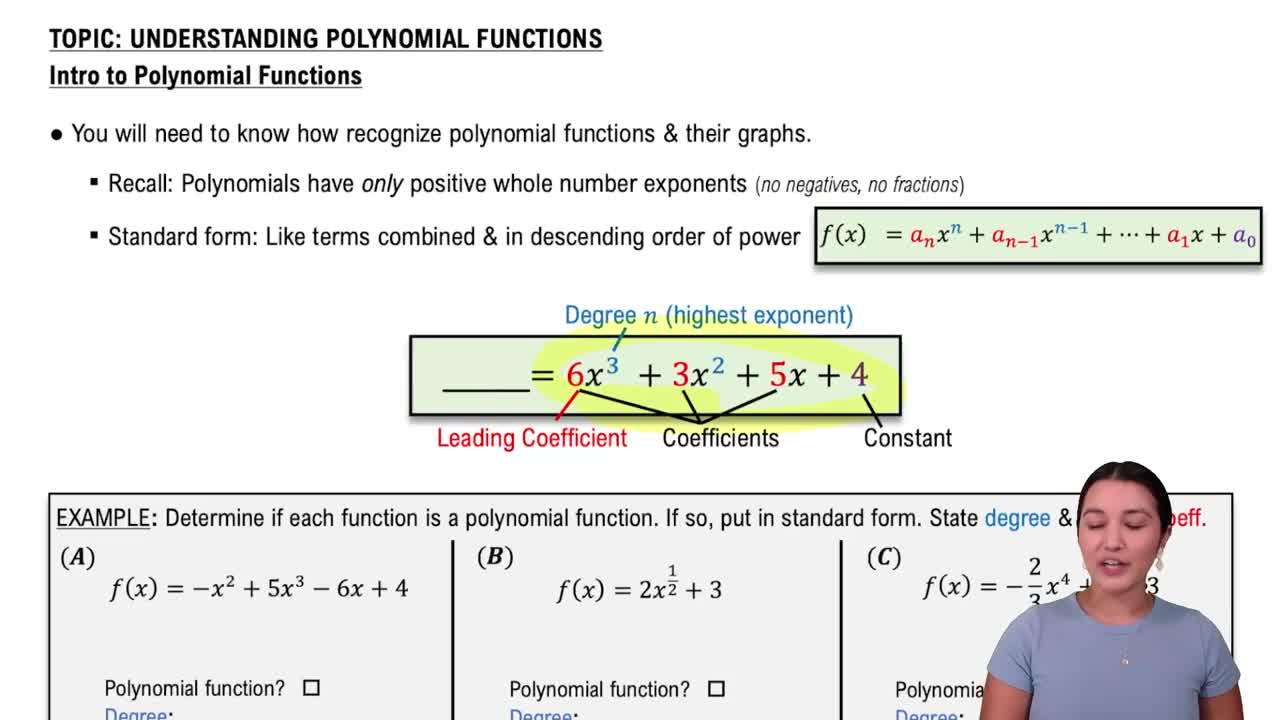Here are the essential concepts you must grasp in order to answer the question correctly.
Synthetic Division
Synthetic division is a simplified method for dividing a polynomial by a linear binomial of the form (x - c). It involves using the coefficients of the polynomial and a specific value (c) to perform the division without writing out the entire polynomial long division. This technique is particularly useful for quickly finding the quotient and remainder when dividing by linear factors.
Recommended video:
Polynomial Functions
A polynomial function is a mathematical expression involving a sum of powers in one or more variables multiplied by coefficients. In this context, the polynomial is represented as (-9x^3 + 8x^2 - 7x + 2), which is a cubic polynomial. Understanding the degree and behavior of polynomial functions is essential for performing operations like division and analyzing their graphs.
Recommended video:
Introduction to Polynomial Functions
Remainder Theorem
The Remainder Theorem states that when a polynomial f(x) is divided by a linear divisor (x - c), the remainder of this division is equal to f(c). This theorem is useful in synthetic division as it allows us to quickly determine the value of the polynomial at a specific point, which can help in verifying the results of the division and understanding the behavior of the polynomial at that point.
Recommended video:



